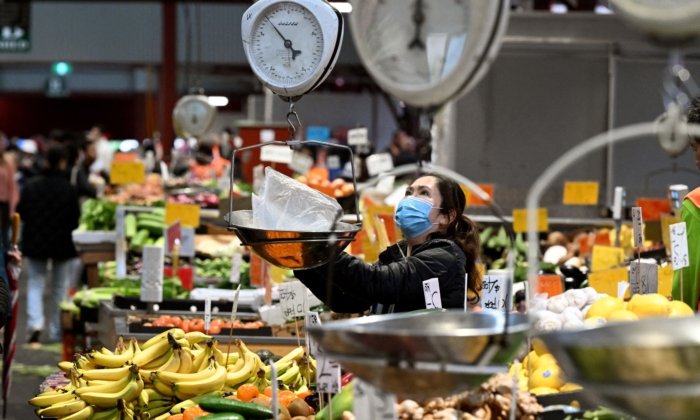Reserve Bank Head Says Australia’s Inflation is Now Generated Domestically
‘This shift from mainly supply-driven to mainly demand-driven inflation has been a part of our inflation outlook for some time,’ said RBA governor.
Global supply chains and unstable factors in international politics are no longer the main drivers of inflation in Australia, according to the latest insight from the central bank.
Addressing economists at an annual dinner on Nov. 22, Reserve Bank of Australia (RBA) Governor Michele Bullock said inflation was becoming “increasingly homegrown and demand-driven.”
The governor explained that while the effects of global supply chain disruptions and high energy prices caused by the war in Ukraine on price growth had waned, there had been a solid demand-driven component to inflation in the background.
“The energy price impacts didn’t hit us at the same time as other countries, but we also saw electricity and fuel prices rise sharply.
“This shift from mainly supply-driven to mainly demand-driven inflation has been a part of our inflation outlook for some time.”
Three Indicators of the Shift in Inflation’s Nature
Ms. Bullock said there were three indicators of the change in inflation’s nature.
The first signal lies in the broad scope of price growth.
According to the governor, the prices of two-thirds of items in the CPI (consumer price index) basket, which includes 11 major groups of consumer goods and services, grew above three percent in the 12 months to the 2023 September quarter.
Except for a few volatile items (such as fresh food and holiday travel) and some items receiving increased government subsidies, prices are growing strongly for most goods and services.
Furthermore, inflation is fuelled by robust growth in the prices of many types of domestic services, including hairdressers and dentists, dining out, sporting, and other recreational activities.
Ms. Bullock pointed out that such high service inflation indicated that demand was greater than supply and that there were domestic cost pressures in the inputs used to supply those services.

The third indicator is that the economy continues to have limited spare production capacity, which is evident in high labour utilisation rates.
As firms could not keep up with customers’ demands due to constrained capacity, it was easier for them to raise prices, Ms. Bullock explained.
What Are the Implications of the Changes in Inflation?
Ms. Bullock said the shift in inflation’s nature was a significant matter for the RBA’s policy response.
The governor explained that if inflation was the product of global supply disruptions and other price rises outside the scope of influence of monetary policy, the central bank’s interest rate decisions would have limited impacts.
However, if inflation arises from aggregate demand exceeding supply, it will be more appropriate to use interest rate hikes to control inflation.
And since May 2022, the cash rate has soared from the historic low of 0.1 percent to the current level, adding significant pressures on borrowers.
Another implication of homegrown and demand-driven inflation is that it will take the RBA longer to return inflation to the desired target.
“It took only three quarters for inflation to fall from eight percent to 5.5 percent as the supply-side issues eased, and there is some more to go there,” Ms. Bullock said.
“But we expect it to take another two years for inflation to fall that much again and move below three percent.
“This is because much of the remaining task of bringing inflation back to target will require bringing aggregate demand and aggregate supply into closer alignment.”
The governor then noted that what the RBA wanted to achieve with monetary policy was to slow the demand growth enough to bring inflation back to target while keeping employment growing.
Ms. Bullock also said while she was aware of the negative impacts of interest rate hikes on household finance, the RBA board had to “set its policy to serve the welfare of Australians collectively.”






